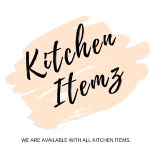
Protect Your Passion: The Ultimate Guide to Kitchen Safety Gear
Introduction to kitchen safety and its importance
The kitchen is often considered the heart of the home—a place where meals are prepared, memories are made, and families come together. However, it can also be one of the most hazardous areas in the house if proper safety precautions are not followed. Kitchen safety refers to the practices and procedures that help prevent accidents, injuries, and foodborne illnesses while cooking or working in the kitchen.
Importance of Kitchen Safety
- Prevention of Injuries
Sharp knives, hot surfaces, boiling liquids, and electrical appliances pose significant risks. Following safety measures can help prevent cuts, burns, falls, and electric shocks. - Fire Safety
Cooking is a leading cause of house fires. Being aware of how to handle flammable materials, properly using appliances, and never leaving cooking unattended are key components of kitchen fire safety. - Food Safety
Proper storage, handling, and cooking of food prevent foodborne illnesses. Cross-contamination, spoiled food, and undercooked meals can pose serious health threats if not managed properly. - Efficient Workflow
A safe kitchen is an organized and clean kitchen. Keeping the workspace tidy and tools properly stored not only prevents accidents but also improves cooking efficiency. - Protecting Children and Others
Kitchen safety helps protect not only the cook but also children, pets, and others who might be nearby. Child-proofing certain areas and supervising at all times are essential safety practices.
kitchen safety is not just about preventing accidents; it’s about creating a secure and comfortable environment where cooking can be a joyful and healthy experience. By following simple safety guidelines, everyone can enjoy the kitchen with peace of mind.
Overview of essential Kitchen Safety Gear
Cooking is an enjoyable and rewarding activity, but it also comes with potential hazards. Whether you’re a home cook or a professional chef, having the right kitchen safety gear can prevent accidents and ensure a safe cooking environment. This guide will cover essential kitchen safety equipment and how to use them effectively.
- Cut-Resistant Gloves: Handling sharp knives and kitchen tools can lead to cuts and injuries. Cut-resistant gloves provide an extra layer of protection when chopping, slicing, or grating. Look for gloves made of durable materials like Kevlar or stainless steel mesh.
- Heat-Resistant Gloves and Mitts: Protecting your hands from burns is crucial when handling hot cookware and oven racks. Silicone or fabric heat-resistant gloves provide insulation and grip to safely handle hot items.
- Aprons and Protective Clothing: Wearing an apron protects your clothing from spills and splatters. For additional safety, opt for flame-resistant aprons, especially when working with open flames or high-heat cooking methods.
- Non-Slip Shoes: Kitchen floors can become slippery due to spills. Wearing non-slip shoes reduces the risk of slipping and falling. Choose shoes with good traction and water-resistant properties.
- First Aid Kit: Accidents happen, and having a well-stocked first aid kit in your kitchen is essential. Include bandages, antiseptic wipes, burn cream, and medical tape to treat minor injuries immediately.
- Fire Extinguisher: A fire extinguisher is a must-have in any kitchen. Ensure you have a Class K extinguisher, which is designed for kitchen fires involving grease and cooking oils. Learn how to use it properly and check its expiration date regularly.
- Smoke and Carbon Monoxide Detectors: Early detection of smoke and harmful gases can save lives. Install smoke and carbon monoxide detectors near your kitchen and test them regularly to ensure they are functioning properly.
- Cutting Board with Non-Slip Base: A stable cutting board prevents accidental slips while chopping. Choose a cutting board with a rubberized or silicone base to keep it in place and minimize the risk of injury.
- Knife Guards and Blade Covers: Storing knives properly is just as important as using them safely. Knife guards and blade covers protect both the user and the knives from accidental cuts when reaching for them in drawers.
- Spill-Resistant Floor Mats: Place anti-fatigue or spill-resistant mats in areas prone to wetness, such as near the sink or stove. These mats provide cushioning and reduce the risk of slips and falls.
- Proper Ventilation Systems: Good ventilation reduces smoke, fumes, and airborne grease, keeping the kitchen environment safe. Use range hoods, exhaust fans, or open windows to maintain air quality.
- Goggles or Safety Glasses: For those working with splattering oil, strong spices, or chopping large quantities of onions, protective eyewear can prevent irritation and eye injuries.
How often should the first aid kit be checked and restocked?
A first aid kit should be checked and restocked at least once every 3 months. However, depending on the environment and usage, more frequent checks may be necessary. Here’s a quick breakdown:
Recommended First Aid Kit Check Frequency:
- Workplaces / High-traffic areas: Monthly
- Homes / Low-use kits: Every 3–6 months
- After each use: Immediately check and restock what was used
During a Check, Look For:
- Expired medications or ointments
- Used or missing items (e.g., bandages, gloves, antiseptics)
- Damaged packaging or containers
- Items affected by moisture or contamination
General Maintenance Tips for Kitchen Safety Gear
- Label Gear: Especially in shared kitchens, labeling gear helps prevent mix-ups.
- Regular Inspection: Set a schedule—weekly or monthly—for checking gear.
- Storage: Keep gear in a clean, dry area, preferably in a designated storage zone to prevent cross-contamination
Final Thoughts
Equipping your kitchen with the right safety gear ensures a secure and accident-free cooking experience. Regularly inspect and maintain your safety equipment, and always follow best practices for handling kitchen tools and appliances. By prioritizing safety, you can enjoy cooking with confidence and peace of mind.


